If you suddenly find a dead bug on your bed in the morning when you wake up, it is more bad news than good news. You may also be asking yourself, “How did it die?” Did I accidentally squish on it while I was sleeping? Or did it die naturally? But the most important question is, “What should I do next?”
What does it mean if you find a dead bed bug? Finding a dead bug strongly suggests that you can find more of them, dead or alive. Although bed bugs are solitary insects and can work alone, they are very likely to work in groups. Also, if the bed bug is female, there’s a huge chance it had laid eggs before her death.
But before taking any action, you should first confirm if it is really a bed bug that you found. Second, you should also know about their behavior and habitat. Third, make sure that it is really dead. And lastly, have at least an idea of how the bed bug died. Fortunately, you can find detailed information if you continue reading.
What Do Live Bed Bugs Look Like?
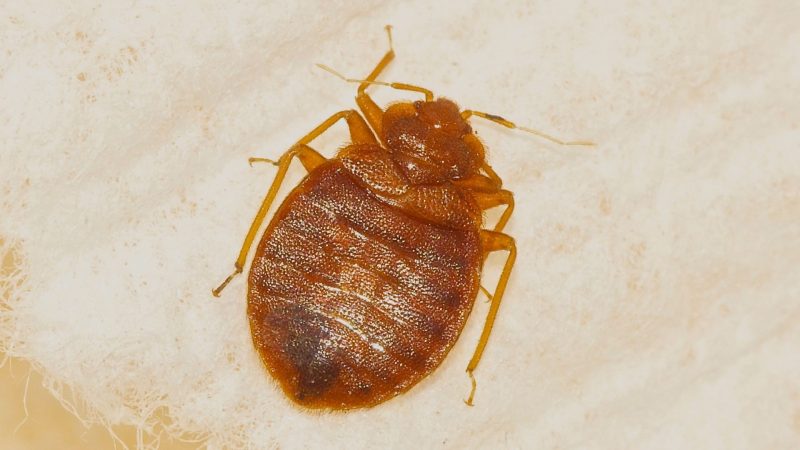
Bed bugs are wingless insects that have oval, flattened bodies and may look like wood ticks. They are usually brown but can turn purplish-red after feeding on blood. Adult bed bugs are between 1/4 and 3/8 inch (5 and 9 mm) long. Male bed bugs have pointed abdomens, while the abdomen of female bed bugs are round.
On the other hand, nymph (newly hatched) bed bugs are usually 1 mm long before molting. They grow up to 4.5 mm long after their fifth and final molting. Nymph bed bugs need to suck blood before going to the next stage. They are usually colorless and translucent but will become darker after feeding.
Sometimes, bed bugs can be mistaken for baby roaches, especially German baby cockroaches. This is because both of them have a lot of similar physical appearances, including color. However, baby roaches move faster than bed bugs, and they have longer antennae. A bed bug’s antennae are almost unnoticeable.
Where and When Can You Find Bed Bugs?
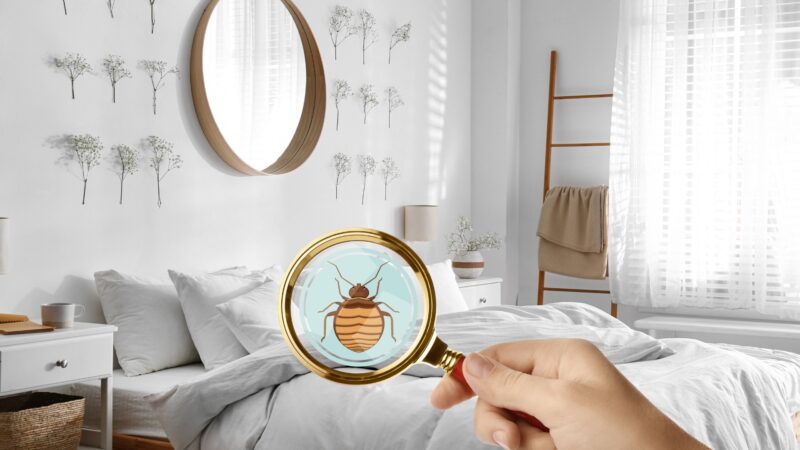
Bed bugs don’t build a nest. Instead, they stay near their host humans. They love hiding around your bed, under your mattress, and behind your headboard. You can also find them in other dark, hidden places, such as under your couch and carpet, behind your wall clock, inside your cabinet, and even in screw heads.
As nocturnal insects, bed bugs are most active at night while people are sleeping. They rest or sleep during the day, which is why you found the dead bed bug in the morning. Nevertheless, you may also have some bed bug bites in schools or offices in the daytime, especially if you happen to sit on infested chairs.
How Can You Tell if Bed Bugs Are Dead?
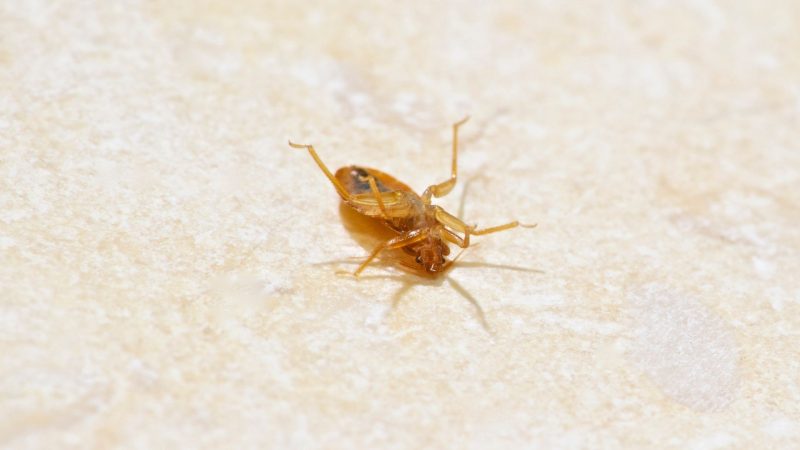
Bed bugs are very likely to be dead if you see them lying on their backs. If they are still alive but already in a dying state, they will still try to flip their bodies over and will slowly crawl away. Live bed bugs will try to escape if you disturb them. Obviously, dead bed bugs will no longer move no matter what you do to them.
What Do Bed Bugs Look Like When They’re Dead?
If you see dead bed bugs after treating an infested area, their bodies should be curled up because their muscles will contract during their final moments. The body of a dead bed bug will also start to dry out and get wrinkled. It may have lost its legs. In most cases, you will also see some trails of blood and feces.
What Do Dead Bed Bug Eggs Look Like?
Eggs are hatched in about 6 – 10 days if the temperature is above 70°F (21°C). However, hatching may take up to 28 days if the temperature is lower than 70°F. Live bed bug eggs are white and oval and are about 1 mm long. On the other hand, dead bed bug eggs may be of different colors and are most likely in clusters.
Can Dead Bed Bugs Play Dead or Come Back to Life?
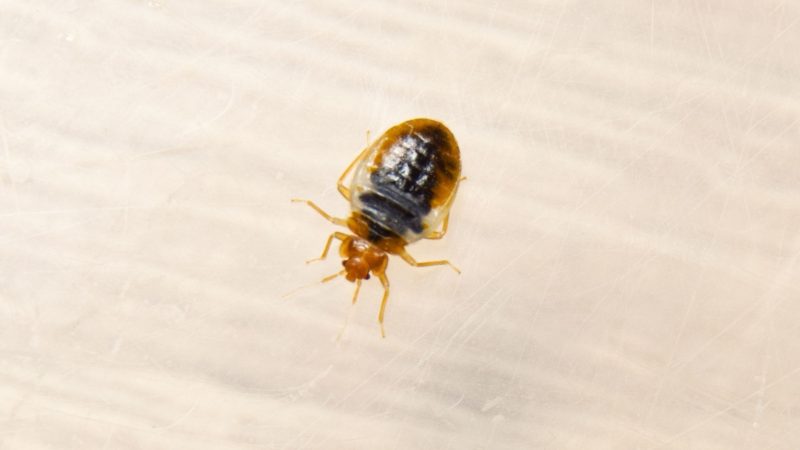
Currently, there’s no scientific study about bed bugs playing dead. But as mentioned above, they will try their best to escape if you disturb them. On the other hand, these nuisance pests don’t move if they are sleeping or resting in hidden areas. Therefore, it’s safe to conclude that bed bugs cannot play dead.
Playing dead (scientifically known as thanatosis) is a defense mechanism of some animals so that they can fool their predators. Believe it or not, some insects can play dead. This includes certain species of ants, bees, wasps, and cicadas. Nevertheless, dead bed bugs are really dead and will never come back to life.
How Long Can Bed Bugs Survive Without Feeding?
Under normal conditions, bed bugs have an average life span of 2 – 4 months. But amazingly, they can survive without feeding for around 400 days in a laboratory under cool temperatures. On the other hand, nymph bed bugs can survive without feeding for a week up to a few months. However, their growth will be delayed.
What Temperature Can Kill Bed Bugs?

Bed bugs are generally cold-blooded creatures. Therefore, they may survive in the winter, especially if they find a warm place to hide. However, bed bugs will also die if it’s too hot or too cold. Such conditions are adopted by professionals while treating a certain room that bed bugs have infested.
A recent study suggested that bed bugs will die if they are exposed at 0°F (–17.8°C) for at least 3.5 consecutive days. They will also die at –4°F (–20°C) if exposed for about 48 hours. Likewise, bed bugs will surely die if you expose them to 3.2°F (–16°C) for 80 hours, no matter what life stages they are.
On the other hand, bed bugs will die if you continuously expose them at 113°F (45°C) for 90 minutes or more. If you increase the temperature to 118°F (47.7°C) for about 20 minutes, these pesky pests and their eggs will eventually get killed. If infestation is in the early stage, you may try using a steamer to kill bed bugs.
What Should You Do if You Find a Dead Bed Bug?
Aside from human blood, live bed bugs may also suck the blood of your pets, such as cats, dogs, and birds. They don’t transmit diseases, but their droppings may transmit a parasite called Trypanosoma cruzi that causes Chagas disease. Therefore, here are some of the things you should do if you see a dead bug:
- Pick up the dead bed bug. To avoid bacteria, wear gloves or use a small shovel.
- Check the surrounding area. Chances are you will find more of them, mostly in a group.
- Don’t throw away infested items such as mattresses. Most of them can still be treated.
- Bed bugs squeeze their bodies in tiny cracks and very small openings. Use a flashlight when searching those areas.
- If possible, check the area during the daytime because that’s their sleeping time.
- Signs of the presence of bed bugs include blood spots and shed skin. When nymph bed bugs molt, they shed their shells and casings.
- Spray the area with safe and natural insecticides, such as Diatomaceous earth (DE). You can also use boiling water or a steamer. Don’t use kerosene or rubbing alcohol. Both of them are highly flammable.
- If the infestation is already severe, you may need the help of pest control services.
Is It Normal to See Dead Bed Bugs After Treatment?
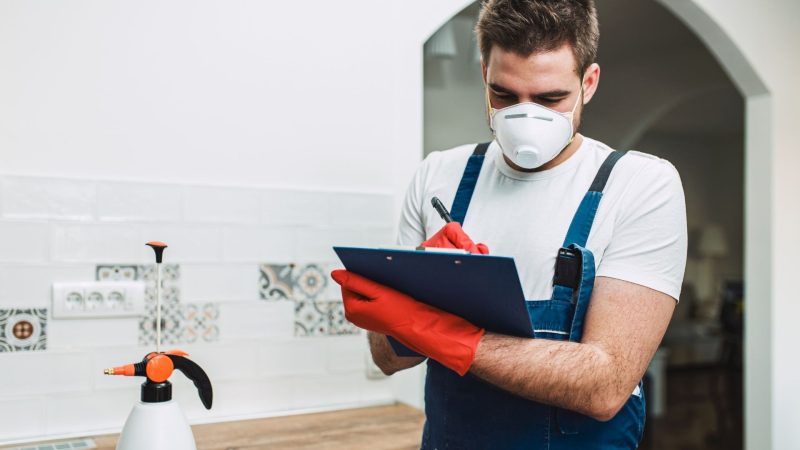
It is normal to see dead bed bugs after treatment. However, it is only very likely to happen after heat treatment. On the other hand, you may see some dead bed bugs after a thorough, and repeated insecticide treatment is done. The result mainly depends on the chemical used and the severity of the infestation.
Will You Still See Bed Bugs After the First Treatment?
You will still see live bed bugs after the first treatment. This is very much possible if chemical treatment is used. Typically, a chemical treatment of a severe infestation will take about 2 to 3 visits by pest control service personnel. On the other hand, proper heat treatment can kill all bed bugs in just one stroke.
Do You Have to Treat the Whole House for Bed Bugs?

Not exactly. Finding a single dead bed bug on your bed may not be a sign of infestation, especially if you only have a few bed bug bites. As mentioned earlier, bed bugs are likely to stay near their host only. If you are sure that there are no more bed bugs inside your bedroom, the other parts of your house may be safe.
However, you should still monitor the effect of the treatment and inspect the other rooms. Remember, bed bugs are opportunists and very persistent creatures. They can hide in very tiny spaces, and crawl to your bedroom. So, if they are present again, you may still need to treat your entire house for bed bugs.
How Can I Stop the Spread of Bed Bugs?
Frankly speaking, it’s very hard to stop the spread of bed bugs. It takes time, lots of effort, and a truckload of patience because bed bugs don’t really go away. You have to eradicate all of them, especially the females. In case you don’t know, they lay about 5 – 7 eggs a week, or between 200 and 250 eggs in their lifetime.
Some insect repellents can repel bed bugs. However, these tiny bloodsuckers will only hide and will come back soon. Bed bugs do not spread from one person to another directly. But because they are good hitchhikers, they can travel with you. Therefore, here are some ways to stop bed bugs from spreading:
- Vacuum every corner of your house regularly.
- Avoid clutter such as clothing or things where bed bugs can hide.
- As much as possible, don’t buy second-hand furniture. Wood is a favorite place for bed bugs.
- If you are using a mattress, use a dust cover or mattress protector.
- Seal cracks, crevices, and small holes on the walls, baseboards, etc.
- While staying in hotels, put your bag on a bag stand, not on the bed or floor.
- When traveling, check your bags meticulously before going home.
- If you will throw away infested items, destroy them so that other people will no longer use them.
Related: Where Do Bed Bugs Come From? | Uncovering the Source of Infestation
List of Sources
Hahn, J., Kells, S. (2021). Bed Bugs. University of Minnesota.
Sutherland, A., Lewis, V. (2013). How to Manage Pests – Pests of Homes, Structures, People, and Pets: Bed Bugs. University of California.
Using Heat to Kill Bed Bugs. Virginia Department of Agriculture and Consumer Services.
Shindelar, A., Kells, S. (2014). Using Steamers to Control Bed Bugs. University of Minnesota.
Protecting Your Home From Bed Bugs. U.S. Environmental Protection Agency.
- How to Get Rid of Copperheads | Practical Guide - August 27, 2023
- How to Get Rid of Corn Snakes | What Makes Them Aggressive? - August 27, 2023
- How to Get Rid of Alligators | Safety Measures and Removal Methods - July 16, 2023
